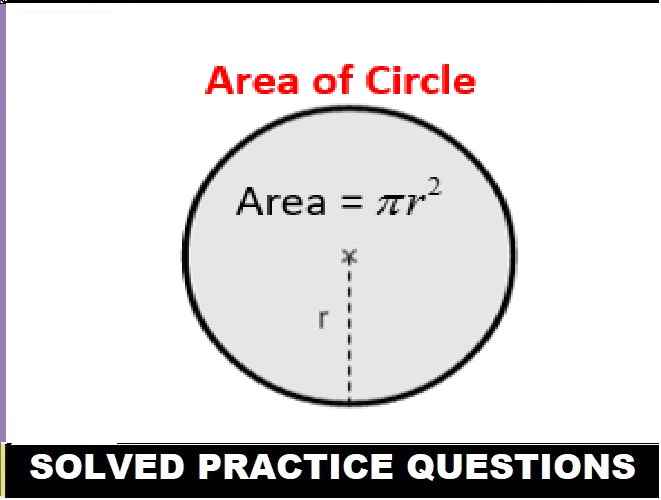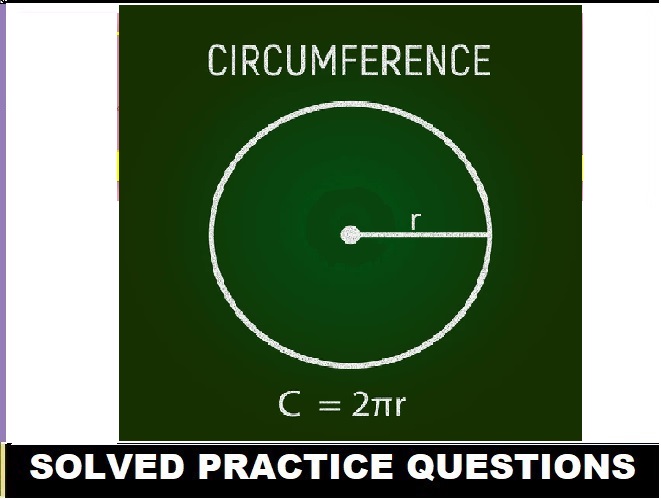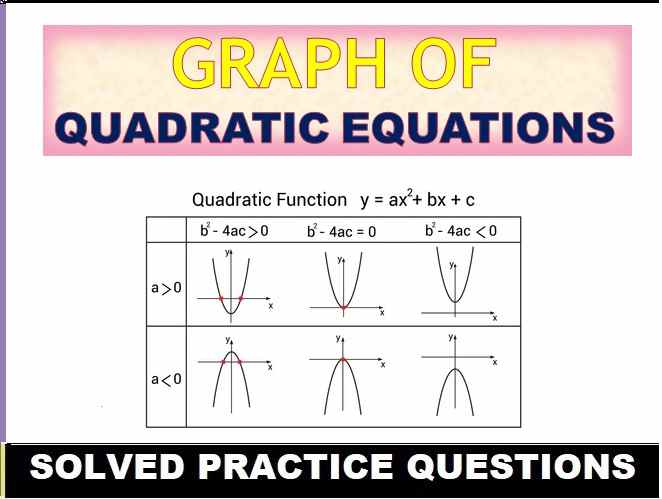Structure of Chromosome Cell Cycle and Cell Division Structured Type Answer Selina solutions Concise Biology for ICSE Class 10 Ch-2. In this article you will get the solutions of Structured Type Questions as council latest syllabus. Visit official website CISCE for detail information about ICSE Board Class-10 Biology.
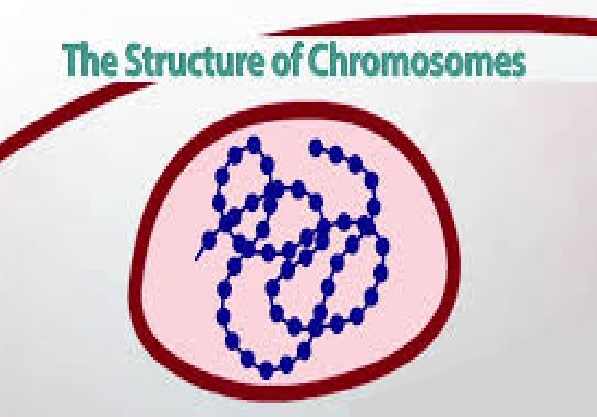
Structure of Chromosome Cell Cycle and Division Structured Type Answer
| Board | ICSE |
| Subject | Biology |
| Class | 10 |
| Book | Selina Concise |
| Chapter-2 | Structure of Chromosome Cell Cycle and Cell Division |
| Topics | Solutions of Structured Type Question |
| Session | 2025-26 |
Structure of Chromosome Cell Cycle and Cell Division
Structured Type Answer Selina solutions Concise Biology for ICSE Class 10 Ch-2
Que-1: Given below is a schematic diagram of a portion of DNA.

(a) How many strands are shown in the diagram?
(b) How many nucleotides have been shown in each strand?
(c) Name the parts numbered 1,2,3,4 and 5 respectively.
(d) Name the DNA unit constituted by the parts 1, 2 and 3 collectively
Sol:
(a) 2
(b) 2 on each strand
(c) 1- Phosphate,2- Sugar, 3- Bases,4- Hydrogen Bond,5 – Base
(d)Nucleotide
Que-2: The three sketches given below (A, B and C) are intended to represent the replication of DNA. What should be their correct sequence starting with the first and ending with the last?
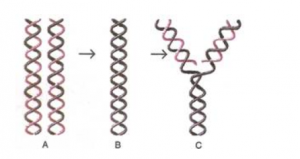
Sol: B, C and A.
Que-3: The diagram below represents a stage during cell division. Study the same and then answer the questions that follow:
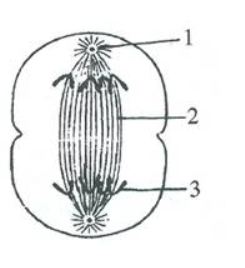
(a) Name the parts labelled 1, 2 and 3.
(b) Identify the above stage and give a reason to support your answer.
(c) Mention where in the body this type of cell division occurs.
(d) Name the stage prior to this stage and draw a diagram to represent the same.
Sol:
(a)
1 – Centromere
2 – Spindle fibres
3 – Chromatids
(b) The stage described in the diagram is the late anaphase of mitosis in an animal cell. The stage can be identified by the presence of separated chromatids which are found at the two poles of the cell. The appearance of the furrow in the cell membrane classifies the stage as the late anaphase.
(c) The division is mitotic division and this kind of cell division occurs in all the cells of the body except for the reproductive cells.
(d) The stage before anaphase is metaphase
Que-4: Draw a labelled diagram to show the metaphase stage of mitosis in an animal cell having ‘6’ chromosomes.
Sol:
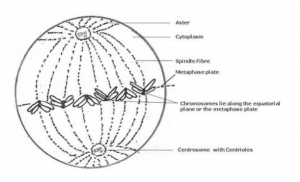
Que-5: The diagram given below represents a certain phenomenon which occurs during meiosis. Name and explain the phenomenon by using the terms – homologous chromosomes, chromatids, and crossing-over.
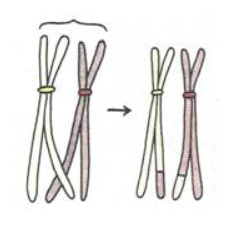
Sol: The exchange of chromatids between homologous chromosomes is called crossing-over. This is the process by which the two chromosomes of a homologous pair exchange equal segments with each other.
Crossing over occurs in the first division of meiosis. At that stage each chromosome has replicated into two strands called sister chromatids. The two homologous chromosomes of a pair synapse, or come together. While the chromosomes are synapsed, breaks occur at corresponding points in two of the non-sister chromatids, i.e., in one chromatid of each chromosome.
Since the chromosomes are homologous, breaks at corresponding points mean that the segments that are broken off contain corresponding genes, i.e., alleles. The broken sections are then exchanged between the chromosomes to form complete new units, and each new recombined chromosome of the pair can go to a different daughter sex cell. It results in recombination of genes found on the same chromosome, called linked genes that would otherwise always be transmitted together.
Que-6: Given below is a diagram representing a stage during mitotic cell division in an animal cell. Examine it carefully and answer the questions which follow.

(a) Identify the stage. Give one reason in support of your answer.
(b) Name the cell organelle that forms the ‘aster’.
(c) Name the parts labelled 1, 2 and 3.
(d) Name the stage that follows the one shown here. How is that stage identified?
(e) Mention two points of difference between mitosis and meiosis with regard to:
(i) The number of daughter cells produced.
(ii)The chromosome number in the daughter cells.
Sol:
(a) Late prophase. Because the nuclear membrane and nucleolus have disappeared.
(b) Centrioles.
(c)
1 – Centromere
2 – Chromatids.
3 – Spindle fibre.
(d) Metaphase. The centromeres of chromosomes are drawn to the equator by equal pull of two chromosomal spindle fibres that connects each centromere to the opposite poles, forming a metaphasic plate.
(e)
| Mitosis | Meiosis |
| (i) Two daughter cells are produced. | (i) Four daughter cells are produced. |
| (ii) It is equational division i.e. the number of chromosome in the daughter cells or parent cells remains the same. | (ii) It is reductional division i.e. the number of chromosomes is reduced to half in the daughter cells. |
Que-7: Given below are three diagrammatic sketches (A, B and C) of one and the same particular phase during mitotic type of cell division.
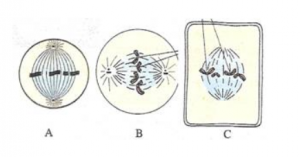
(a) Identify the phase …………..
(b) What is the diploid number of chromosomes shown in them? …………….
(c) Identify whether these are animal cells or plant cell? Give reasons.
A ……………..
B ……………..
C ……………..
Sol:
(a) Metaphase.
(b) 4.
(c)
A – Animal
B – Animal
C – Plant
Que-8: Shown below are four stages (A, B, C, D) (not in sequence) of a certain kind of cell division.
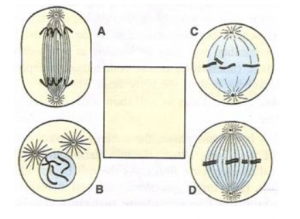
(a) Is it a plant cell or an animal cell? Give two reasons ………….
(b) Is it undergoing mitosis or meiosis? ………………
(c) What should be the correct sequence of these four stages among themselves? ………………
(d) Name the stage that should precede the earliest of these stages…………..
(e) Draw the stage named above inside the blank space provided.
Sol:
(a) This is an animal cell because:
(i) The outline is circular (in plants it would be angular {rectangular or polygonal}) and cell wall is absent.
(ii) Centrosomes on centrioles are present. (These are found only in animal cells)
(b) Mitosis.
(c) B, C, D, A.
(d) Interphase.
(e)
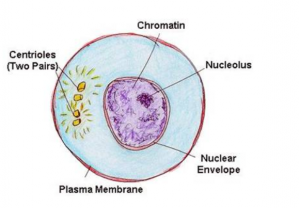
Que-9: Given below is a diagram representing a stage during mitotic cell division. Study it carefully and answer the questions that follow.
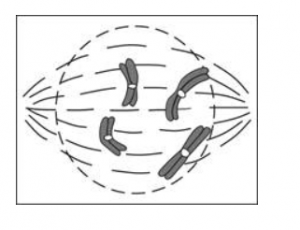
(a) Is it a plant cell or an animal cell? Give a reason to support your answer.
(b) Identify the stage shown.
(c) Name the stage that follows the one shown here. How is that stage identified?
(d) How will you differentiate between mitosis and meiosis on the basis of the chromosome number in the daughter cells?
(e) Draw a duplicated chromosome and label its parts.
Sol:
(a) It is a plant cell because centrioles are not shown in the diagram.
(b) Prophase
(c) Metaphase. Chromosomes arrange themselves on the metaphase or equatorial plate.
(d) Difference between mitosis and meiosis based on the chromosome number in daughter cells:
| Mitosis | Meiosis |
| Chromosome number remains the same as that of parent cells. | Daughter cells receive only half the number of chromosomes from parent cells. |
(e) Duplicated chromosome:
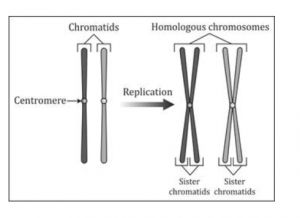
–: End of Selina Concise Biology ICSE Class 10 Structure of Chromosome Cell Cycle and Cell Division Structured Type Answer Solutions :-
Return to:- Concise Selina ICSE Biology Class-10 Solutions
Thanks
Please Share with your friends
